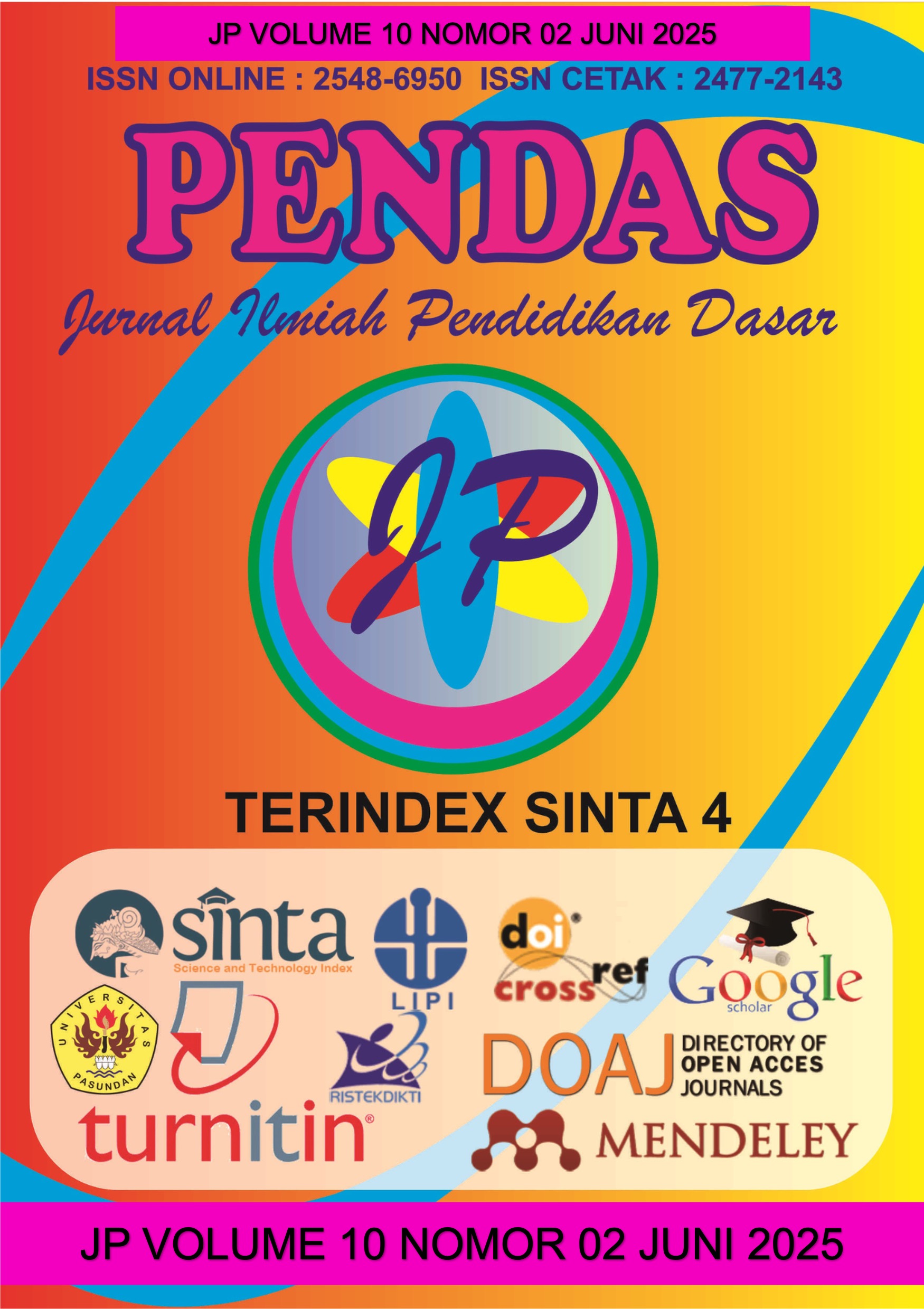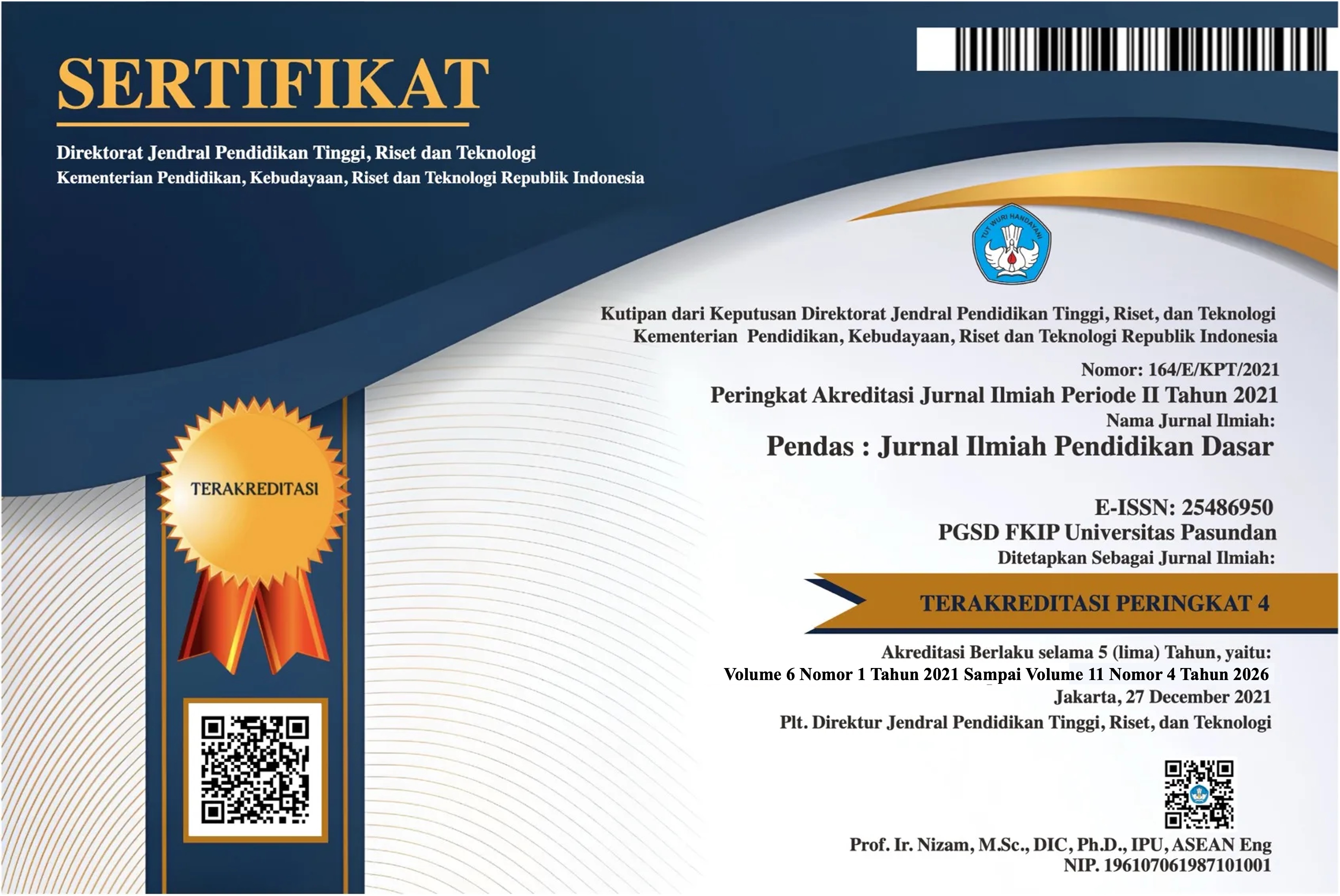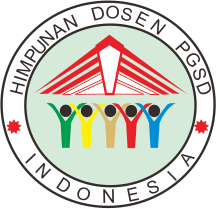PENGARUH MEDIA PAKGATA BERBASIS AUGMENTED REALITY DENGAN PENDEKATAN TARL DAN CRT TERHADAP PEMAHAMAN SISWA KELAS IV SD TENTANG JEJAK KARBON
DOI:
https://doi.org/10.23969/jp.v10i02.26827Keywords:
PAKGATA, Augmented Reality, carbon footprint, TaRL, CRTAbstract
This classroom action research aims to examine the effectiveness of the Augmented Reality (AR)-based learning media PAKGATA (Paku Gantung Bercerita), integrated with the Teaching at the Right Level (TaRL) and Culturally Responsive Teaching (CRT) approaches, in enhancing fourth-grade elementary students’ understanding of the carbon footprint concept. The research was conducted in two cycles involving 28 students from class 4D at SDN Kaliasin 1 Surabaya. In the first cycle, the media did not yet include AR features and the worksheets were not differentiated, resulting in low student engagement and a passive learning environment. In the second cycle, the AR-based PAKGATA media was enhanced and integrated with TaRL and CRT through leveled and contextual worksheets. The results showed a significant improvement in students’ learning outcomes, with the average score increasing from 61.29 in Cycle I to 88.00 in Cycle II. The calculated effect size using Cohen’s d was 2.30, indicating a very large effect. Observational and interview data further supported the quantitative findings, revealing increased student participation, engagement, and contextual understanding. This study concludes that the integration of AR-based PAKGATA media with TaRL and CRT approaches is highly effective in improving elementary students’ environmental literacy, particularly in understanding the carbon footprint concept.
Downloads
References
Amalia, M., Pratama, M. V., Pratiwi, N. A., & Fujiarti, A. (2023). Pengaruh media interaktif terhadap minat belajar siswa pada pembelajaran IPA kelas 4 SD. Jurnal Jendela Pendidikan, 4(1), 1–8. https://doi.org/10.57008/jjp.v4i01.689
Arikunto, S. (2021). Prosedur penelitian: Suatu pendekatan praktik (Edisi Revisi). Jakarta: Rineka Cipta.
Banerjee, A., Banerji, R., Duflo, E., Glennerster, R., & Khemani, S. (2023). Improving learning outcomes through Teaching at the Right Level: Evidence from field interventions. Journal of Educational Development, 93, 102674. https://doi.org/10.1016/j.worlddev.2022.102674
Cohen, J. (1988). Statistical power analysis for the behavioral sciences (2nd ed.). Lawrence Erlbaum Associates.
Gay, G. (2022). Culturally responsive teaching: Theory, research, and practice (3rd ed.). Teachers College Press.
Hayya’, S. (2023). Pengembangan media paku gantung berbasis augmented reality untuk pembelajaran interaktif. Jurnal Teknologi Pendidikan, 10(1), 45–57.
Intergovernmental Panel on Climate Change. (2023). Climate change 2023: The physical science basis. https://www.ipcc.ch/report/ar6/wg1/
Istiqomah, L., Reffiane, F., & Sanjaya, D. (2024). Pengaruh strategi pembelajaran berdiferensiasi terhadap hasil belajar IPAS siswa kelas V SDN Sawah Besar 01. Journal of Education Research, 6(3), 16153–16158. https://doi.org/10.31004/joe.v6i3.5478
Kemendikbudristek. (2021). Kurikulum dan silabus SD/MI kelas IV tema Menjadi Pahlawan Lingkungan. Jakarta: Kementerian Pendidikan, Kebudayaan, Riset, dan Teknologi Republik Indonesia.
Lakens, D. (2021). Calculating and reporting effect sizes to facilitate cumulative science: A practical primer for t-tests and ANOVAs. Frontiers in Psychology, 12, 645192. https://doi.org/10.3389/fpsyg.2021.645192
Downloads
Published
Issue
Section
License
Copyright (c) 2025 Pendas : Jurnal Ilmiah Pendidikan Dasar

This work is licensed under a Creative Commons Attribution 4.0 International License.



















